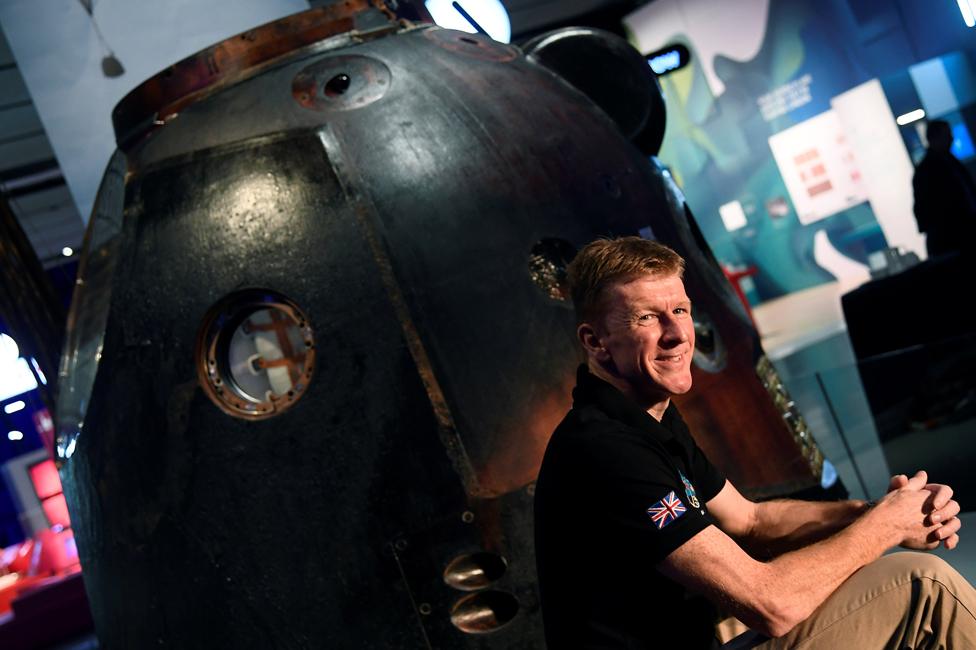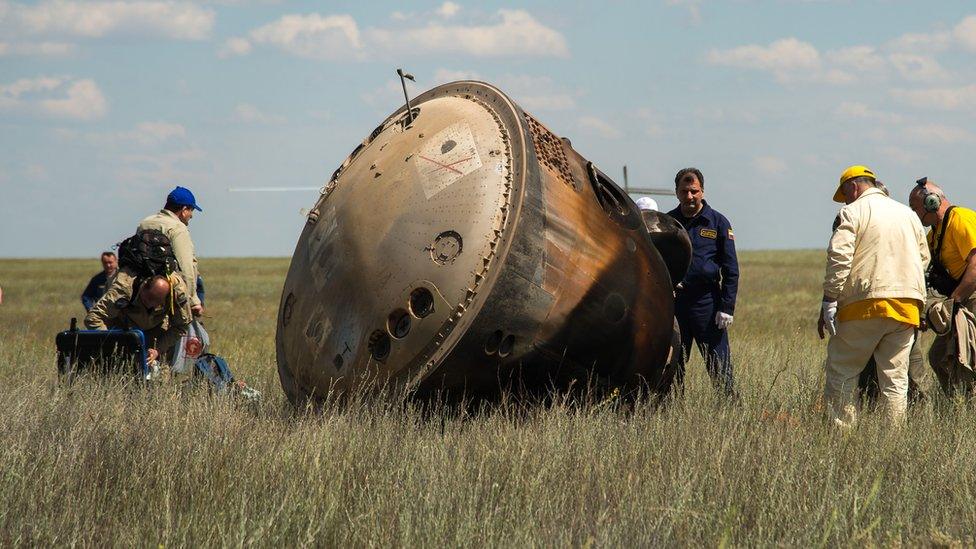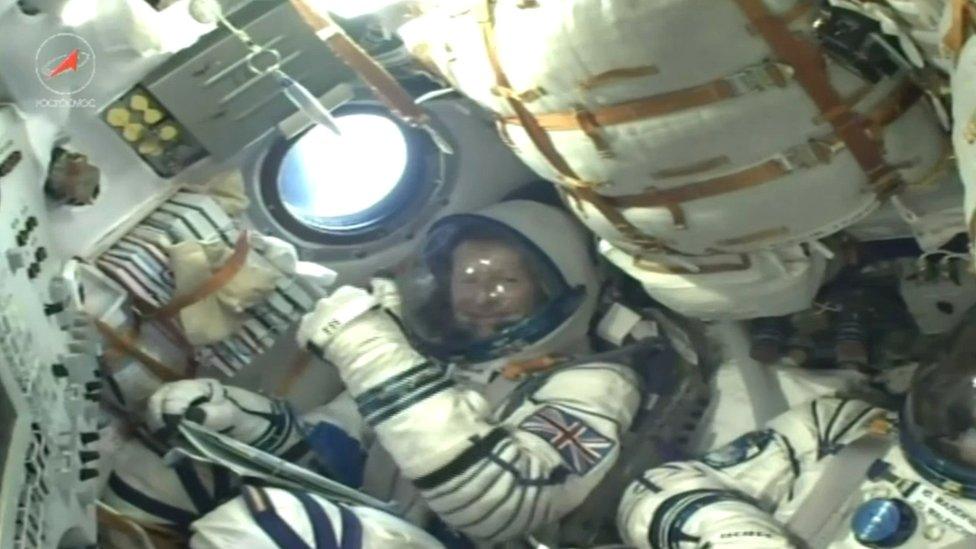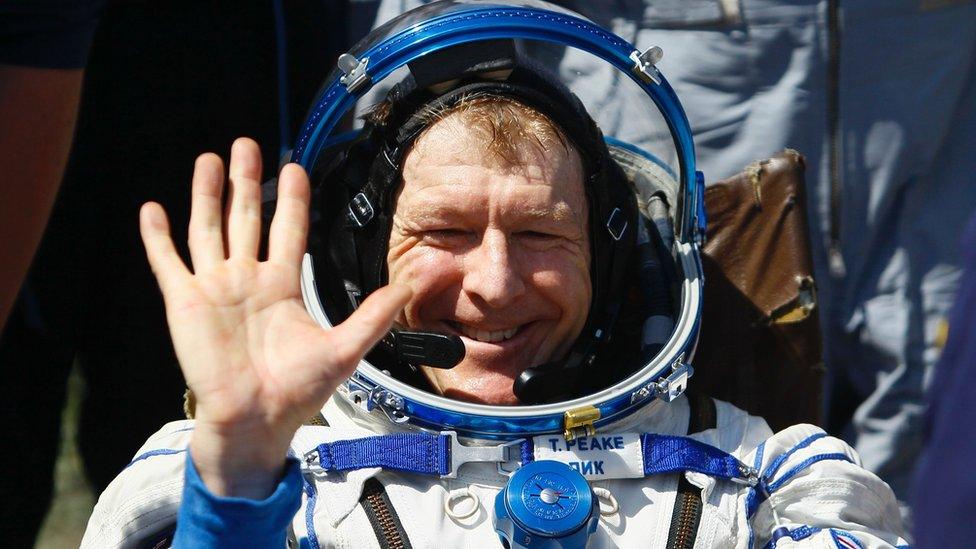Tim Peake's capsule goes on display at Science Museum
- Published

Reunited: It was the first time Tim Peake had seen the capsule since stepping out of it in June
The spacecraft that carried Tim Peake to and from the International Space Station last year has gone on display at London's Science Museum.
The museum says the Russian capsule is an important part of UK space history and hopes it will inspire the public.
The Soyuz TMA-19M has been refurbished, but is still slightly singed from re-entry into the Earth's atmosphere.
Business Secretary Greg Clark has confirmed that Major Peake will make a second mission to the space station.
The timing will be decided by the European Space Agency (Esa).
Mr Clark said: "Tim Peake's Principia mission inspired a generation, and showed just how far science can take you."
Another mission?
The UK committed in December to continue to participate in Esa's space station programme.
And last week, Esa's director-general Jan Woerner set out his plans for human space flight at a news conference in Paris.
He announced that another mission was "foreseen" for Major Peake in the next wave of European manned missions. A second flight for the British astronaut would likely happen in the period 2019-2024.

Tim Peake's Soyuz capsule is shown on the Kazakh steppe shortly after it returned him and two other crew members to Earth

Major Peake's capsule sits atop a Soyuz rocket on the launch pad at Baikonur in 2015
Tim Peake's capsule goes on display at Science Museum
Tim Peake said he was delighted to see the capsule in the UK: "I hope that for everybody who gets to visit it will have a really great source of inspiration and maybe sow the seeds of future dreams for other people. "
Just over a year ago, Tim Peake set off for his mission to the International Space Station. Within a few weeks he became the first British astronaut to walk in space.
Executives at the Science Museum hope the spacecraft's connection to the British astronaut will prove a major draw.
Impulse buy
Museum director, Ian Blatchford, told BBC News that the purchase of the spacecraft was almost like an "impulse buy". He explained that he made a casual enquiry while in Moscow over the summer whether the spacecraft was for sale and to his surprise the spacecraft owners agreed.
It was from within this 2m-high, bell-shaped vehicle that Major Peake witnessed the wonders of space.
The right-hand seat was Tim's and from it he looked out of the window and saw the curvature of the Earth for the first time. It was also from this window that he witnessed what it was like to re-enter the atmosphere at the end of his mission.
The spacecraft provides the UK with a link to its own astronauts and a reminder of its role in space exploration.
The Science Museum says that it wants the display to inspire those that see it, especially children - many of whom might wish to follow in Major Peake's footsteps.
Follow Pallab on Twitter, external.

Major Peake gives the thumbs up during his launch into orbit
- Published5 December 2016

- Published18 June 2016
